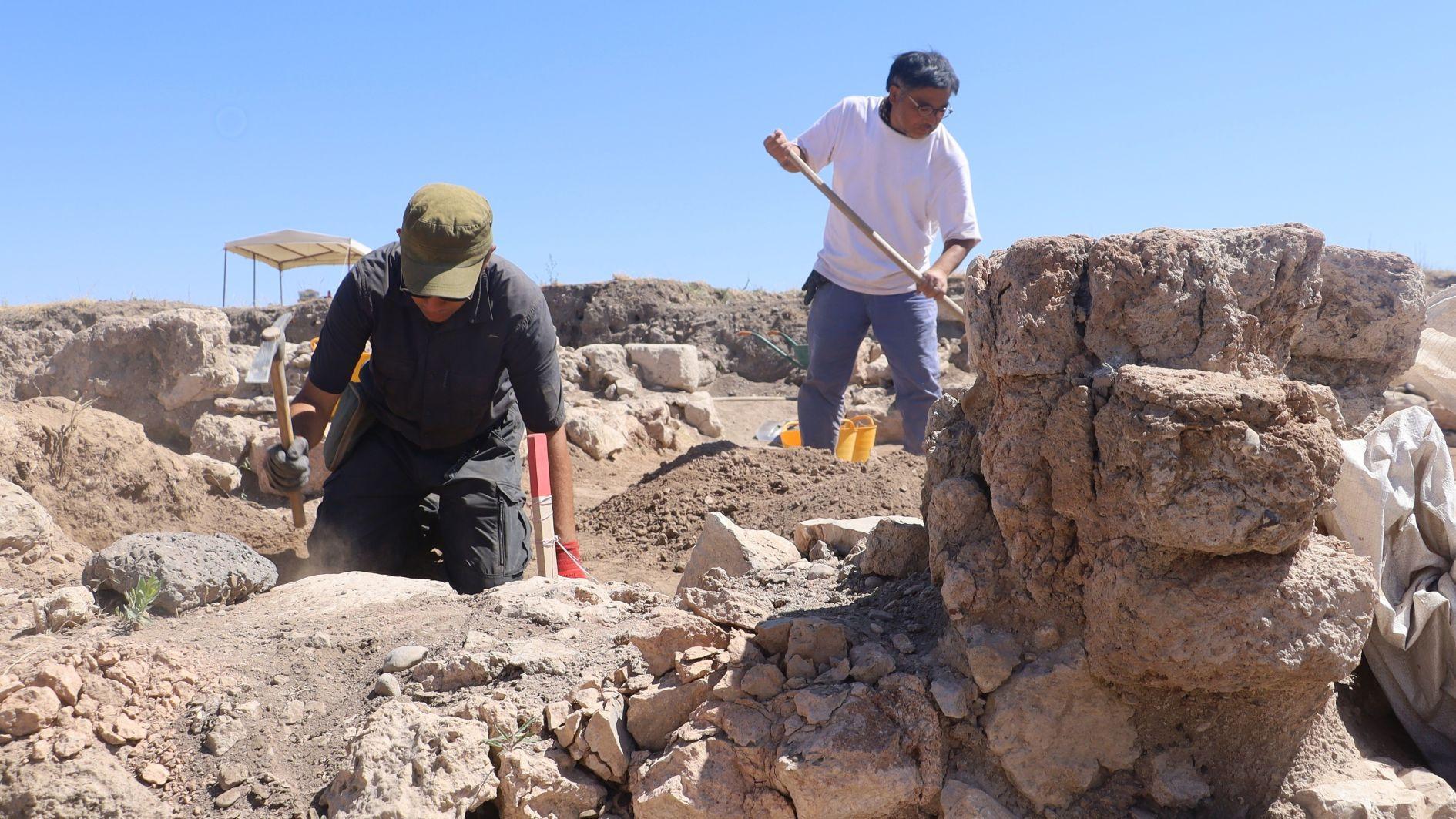
Archaeological excavations in the ancient city of Samuha, one of the major Hittite centers located in central Türkiye, have revealed significant remains from the Early Byzantine period, including what is believed to be a communal burial site.
Excavations in Kayalıpınar village in Sivas have been underway since 2005 under the coordination of the Sivas Museum Directorate with the consultancy of Vuslat Müller-Karpe. The project is currently led by Çiğdem Maner of Koç University’s Archaeology and Art History department.
This season’s work, which began on July 3 and will continue until mid-September, brought to light findings from not only the Hittite period but also the Old Assyrian, Roman, Early Byzantine and Medieval eras.
Speaking about the progress, Maner noted: “Since July 3, we have been working tirelessly at Kayalıpınar. Alongside Hittite finds, we uncovered remains from the Old Assyrian, Roman, Early Byzantine and Medieval periods, which provide crucial insights for Eastern Cappadocia as a whole.”
Deputy head of excavations, Özgü Çömezoğlu Uzbek from Istanbul University, emphasized this year’s Byzantine discoveries. “Kayalıpınar (Samuha) is a key settlement. Following the Hittite and Roman layers, we are now uncovering vital data dating up to the 7th century,” Uzbek said.
“The Early Byzantine finds are concentrated in specific areas and include everyday pottery fragments, glass objects and coins confirming the chronology.”
One of the most notable discoveries is an Early Byzantine cemetery. “This is significant because it confirms that the site was used as a burial ground during that period,” Uzbek explained.
“We identified early cross engravings on tomb covers, fragments of glass oil lamps, coins and personal items such as a bronze earring and a pendant. Nearby trenches yielded perfume bottle fragments, ceramics and more lamps.”
Layers beneath the Byzantine remains continue to yield Hittite tablets, while other areas have revealed Roman roads built over Hittite walls and later Byzantine structures.
The finds extend into the Seljuk period, with artifacts dating as late as the 12th and 13th centuries. Excavations will continue in the coming years, with archaeologists confident that further discoveries await.